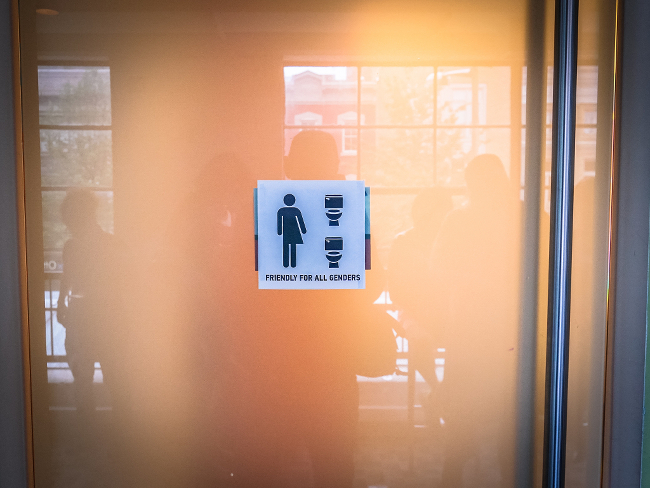Last year, Britain’s only NHS clinic dealing with gender identity conditions in under 18s reported a 100% increase in the number of children being referred to them for assessment and treatment. Polly Carmichael, the clinic’s director of gender identity services, reports that, since 2009, the number has increased by 40 – 50% year on year, but that last year they doubled in number. That rise comes with a world of new problems for trans youth.
Trans kids can face challenging times throughout their education. Some schools are rising to the challenge, offering extra training for staff, information for fellow pupils, and accommodations that seem basic (but can be unfortunately unusual) such as agreeing to allow trans pupils to wear the uniform of the gender they identify with and use the bathroom that suits their needs.
However, there is a long way to go. Transphobic bullying is all too prevalent and may be dealt with poorly, teachers and pupils may misgender trans students and call them by their former names, and access to toilets can be hit and miss.
On the other side of the pond, a Texan judge has issued an injunction that counters advice from the federal government that recommended allowing trans pupils in schools to use the bathroom that accords with their gender identity rather than the gender that was assigned to them at birth. Legal action across 12 US states demonstrates similar attitudes around the country. North Carolina has led the way in spreading transphobic myths and smear campaigns to prevent trans people from accessing the toilets they need to use.
At the same time, Ashton Whitaker, a high school student, is suing his school district because students refer to him by his previous name and won’t let him use the boys’ toilets. He, as other trans kids have also reported, has taken the potentially dangerous step of reducing the amount he drinks in order to minimise the chance that he would need to use the bathroom while at school, causing him to have migraine headaches and even faint.
Arguments about who should have access to which bathroom endure around the world, but individual trans students are suffering due to the poor decisions, or lack of decisions, being made by school authorities and legal bodies. While a hypothetical argument about social conditioning and genital presentation may be interesting philosophically, it is easy to lose sight of the trans kid in school who daren’t go to the bathroom.
The academic discussions and the political fighting have a place. I’m not the only person who gets frustrated at lack of progress, but it is sometimes through these conversations that people begin to understand issues and come to their own conclusions. However, when a young person can’t have a wee between lessons because they’ll be in danger in the gents’ and thrown out of the ladies’, the principles become less important than that child’s needs.
Patrick McCrory, the North Carolina governor who has been outspoken in rejecting trans people’s rights to use the bathroom, referred to it as a matter of ‘basic privacy’ and one of ‘common sense’. But where is the common sense in a young boy fainting rather than drinking enough liquids throughout his day at school? Where is the privacy violation when somebody in a separate cubicle to you also uses the toilet?
The idea that using a public toilet should be some kind of optimum experience for the average cisgender heterosexual is beyond me. A lack of physically accessible toilets is my main bugbear but, as a cis woman, there is nothing threatening about trans women and girls sharing my space. I’m the least threatened person in that equation. The general public’s acceptance of me as a lesbian in public toilets has only recently become less of an issue, as if I was ready to pounce on anybody using that space purely because we were going to pull down our pants in our respective cubicles, so I recognise the attempted exclusion of trans women as something familiar to the LGBT community. Yet what is happening now is far more vocal and threatening to trans people than it ever was to me in the past.
And so what if somebody in a different cubicle looks different to you? So what if their genitals are in a different shape (as if all cis people’s are identical)? They just need a wee. For children at school, this is an especially crucial issue that should not be shouted down by anybody whose principles come before the basic kindness and respect that allows children to go to the toilet in the place that suits them best. The bathroom where they will be the safest and feel the least uncomfortable.
For more information on how to make schools welcoming to trans kids, Mermaids UK has produced a booklet, the Trans* Inclusion Schools Toolkit, and UK Trans Info has a list of resources for schools.
Photo: Ted Eytan/Creative Commons

